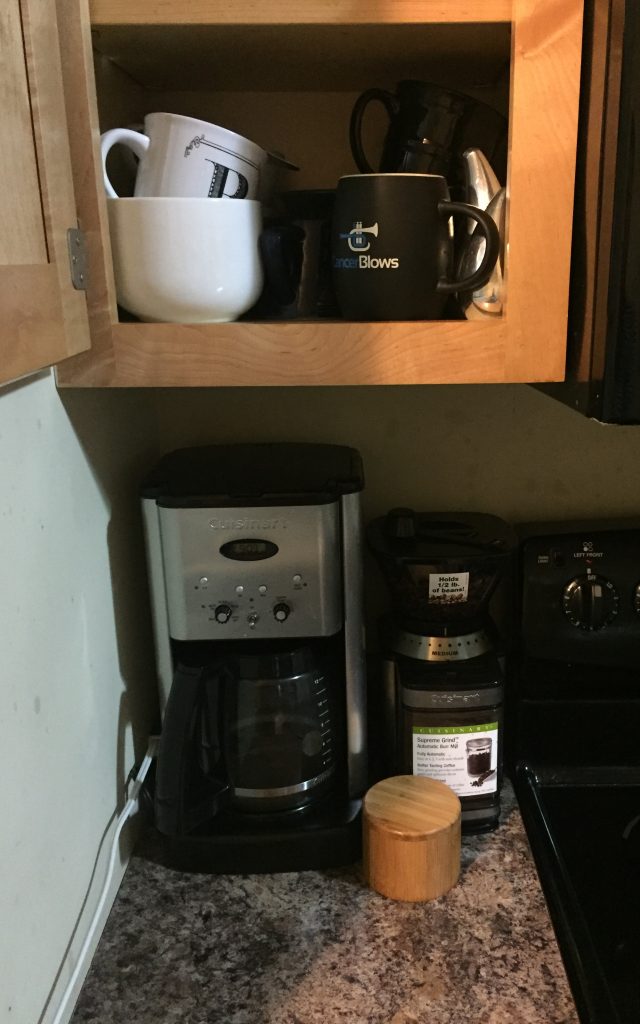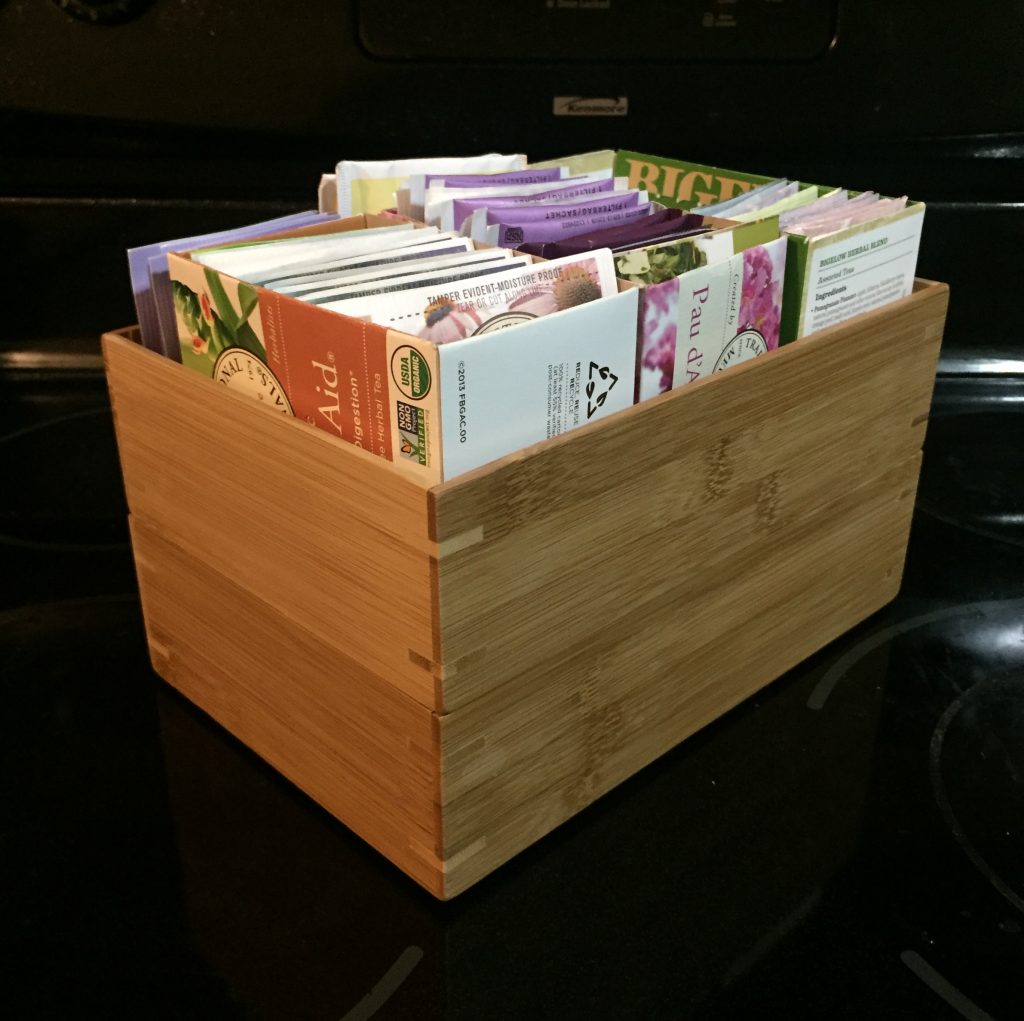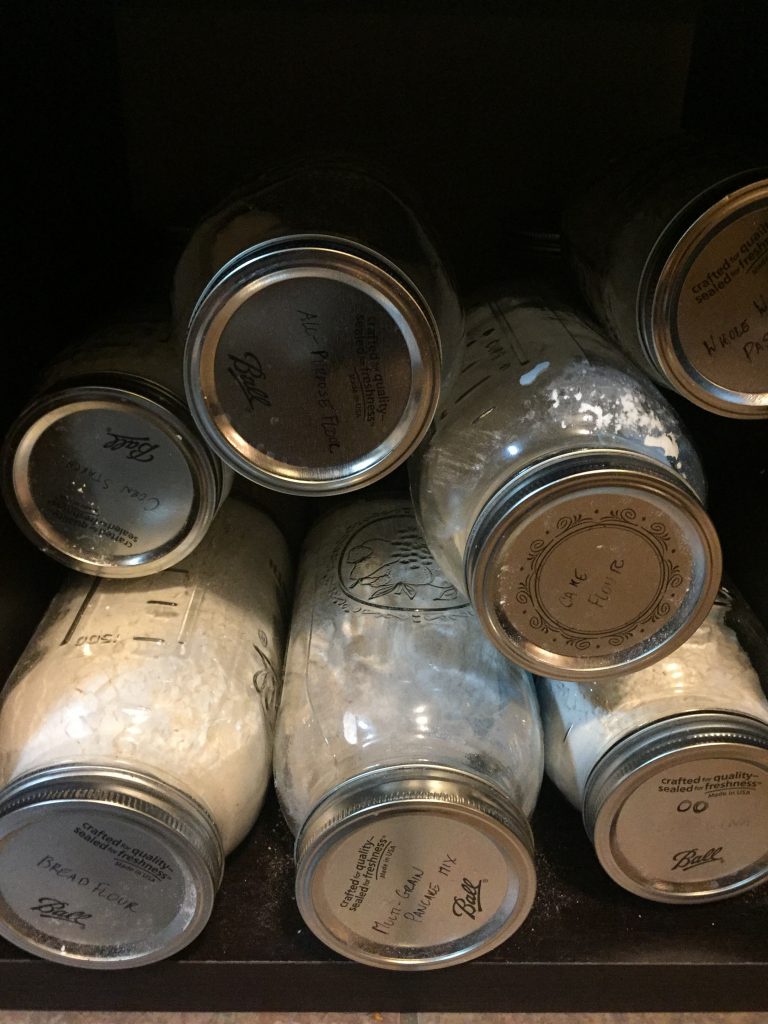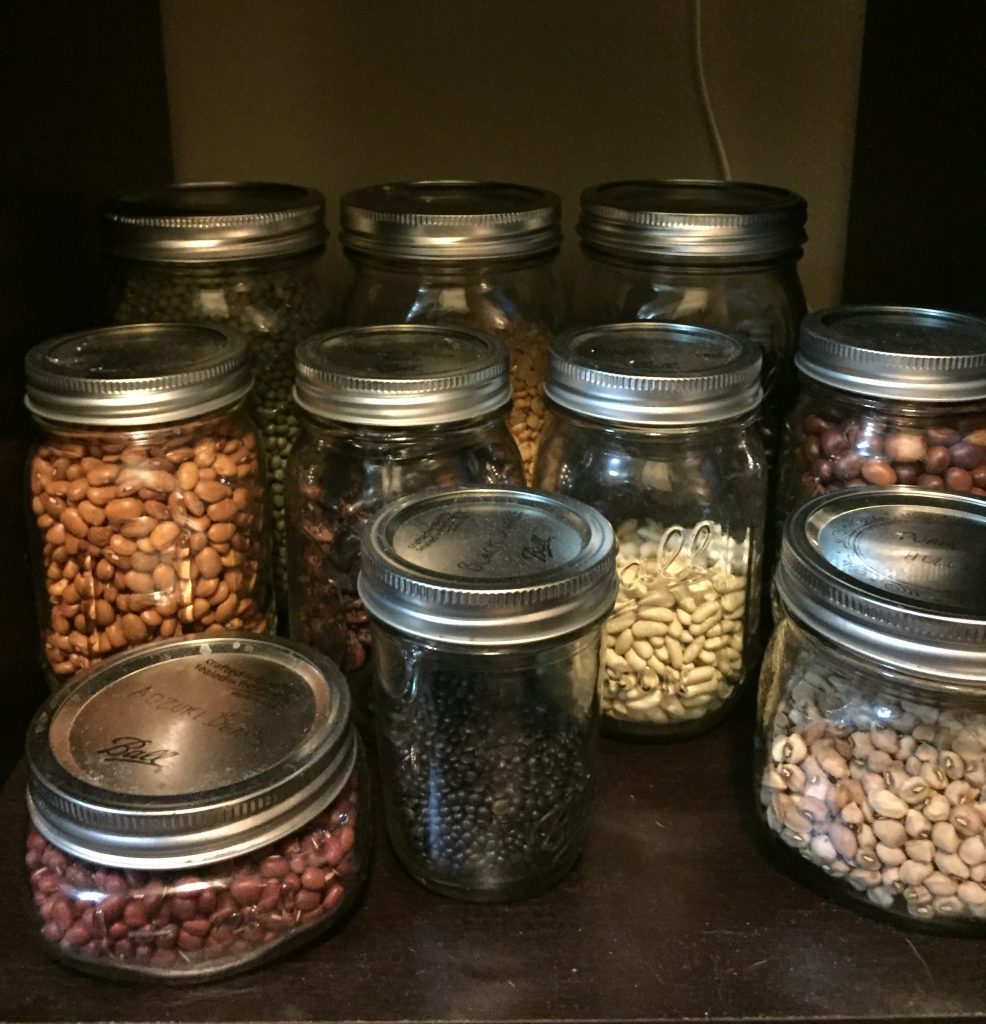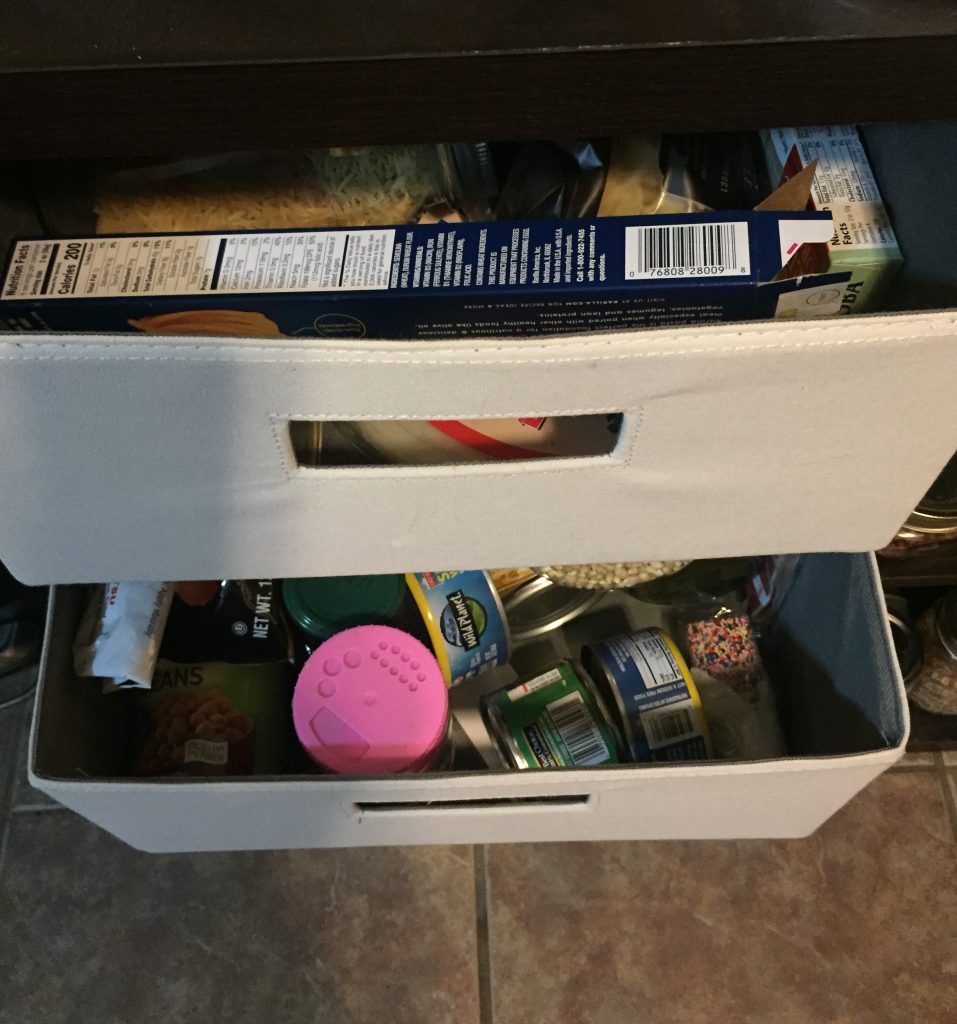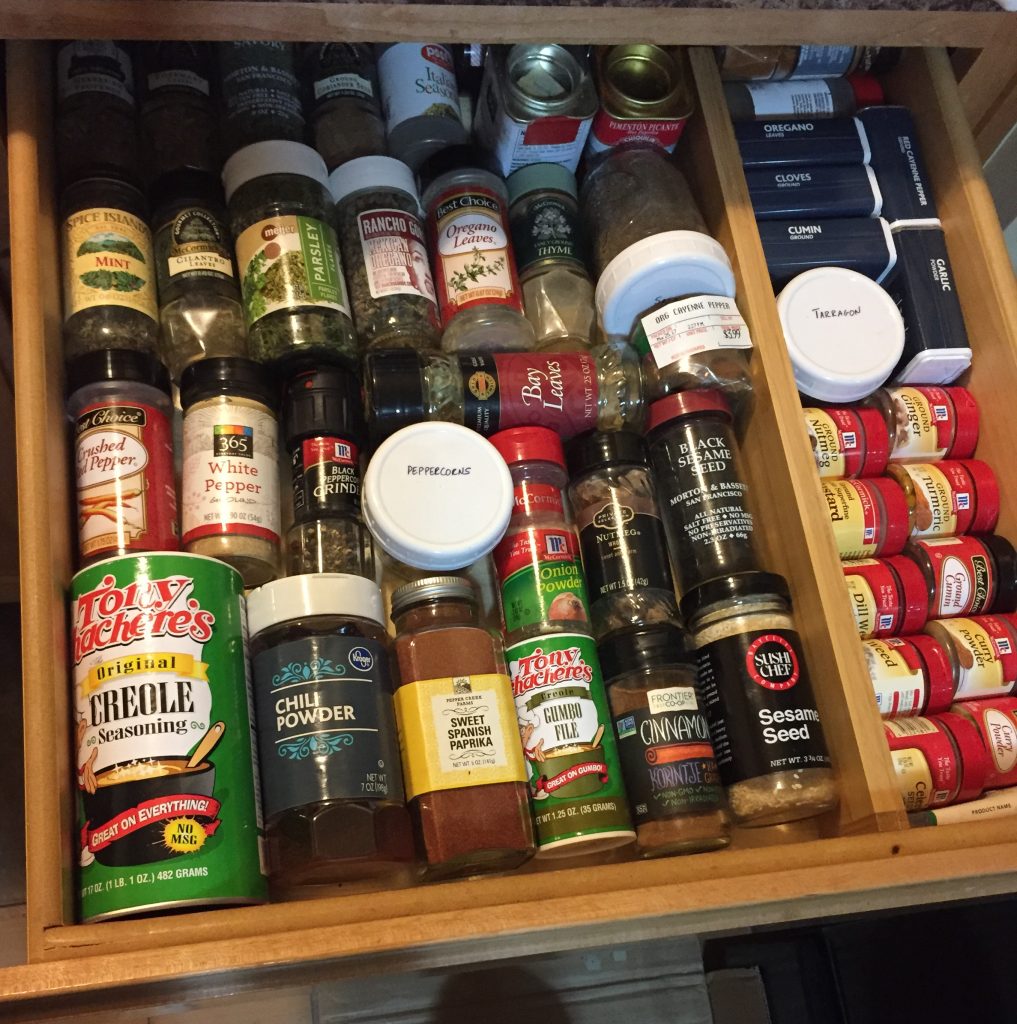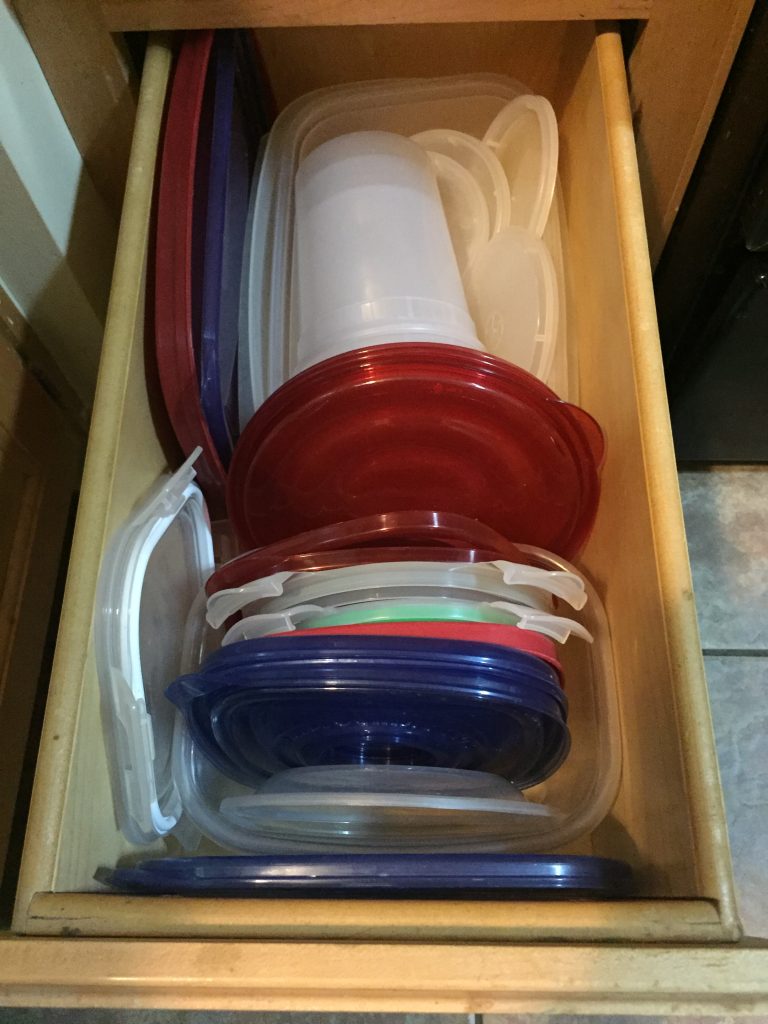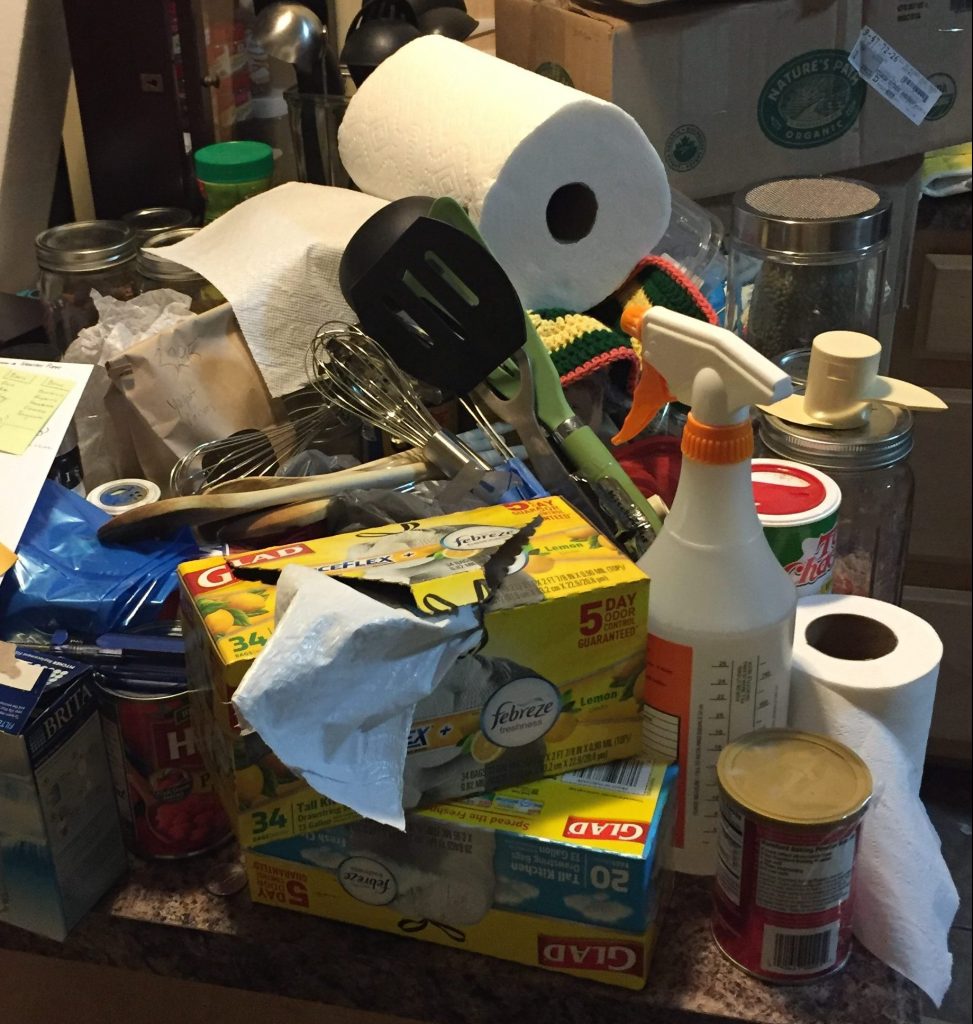
It took three days to set up our kitchen.
Fortunately, my husband was attending a conference and not around to witness the utter destruction of our apartment. Tip for newlyweds: your stuff + someone else’s stuff + stuff people gave you + small kitchen = yard sale. However, we had already had the sale two weeks prior, and still I found myself confronting a mountain of spatulas, four Pyrex measuring cups, table service for twelve, a collection of commemorative beer mugs, a dozen pots and pans including three giant stock pots, and an incomprehensible number of thermoses. Somehow it all had to fit.
But I’ve had experience with culinary tetris, because I first started cooking in a galley-style kitchen with cabinets that were inevitably too small and countertops that could accommodate exactly one task at a time. I’m pleased to report that this time around, mysetup is more streamlined, even with twice as much stuff. Looking to overhaul your space? In this post I’ve provided a list of organizational Dos and Don’ts, along with pictures so you can see what I did.
Organization By Zone
The Zone By Your Dishwasher
- DO…put plates/bowls/water glasses next to the dishwasher. Unloading clean dishes is a pain. Make it easier.
- BUT DON’T…set up a drying rack. Use a towel and keep the counters clear. For items that need to drip-dry, such as strainers, install a hook above the sink.
The Zone by Your Stove
- DO…keep spatulas, tongs, potholders, and salt accessible.
- BUT DON’T…put oils and spices beside the stove (unless they live in a cabinet or drawer). Heat can cause them to spoil.
Your Prep Zone
- DO…establish a prep zone. You’ll want an empty countertop with easy access to knives, cutting boards, prep bowls, measuring cups/spoons, and a trash can.
- BUT DON’T…choose a countertop beside the sink where you wash dishes (if you can help it). Sure, it’s nice to be able to rinse tomatoes and go straight to slicing without trailing water across the floor. But if you wash many dishes in your sink, you’ll also splash a lot of dirty water into a region where sanitation is important. If you’re lucky enough to have a second sink, consider designating one for vegetables and one for dishes.
The Zone By Your Dining Area
- DO…keep silverware as close to the table as possible. You’re going to forget a serving spoon or a butter knife. Make them easy to grab.
- BUT DON’T…use the silverware drawer for the knives you use to prep meals. These knives are longer, sharper, and more expensive. Give them their own location.
The Pantry
- DO…use airtight containers for anything that might sit around between the day you open it and the day you use it up. I prefer glass canning jars.
- BUT DON’T…overlook expiration dates. Make your pantry compact enough that you won’t forget what you have, and have a designated storage area for surplus. We also use a white board to keep track of what we need to use.
Organization By Category
Appliances
- DO…prioritize accessibility. Appliances are heavy. They are a pain to clean. They are a pain to set up. They take up enormous amounts of kitchen real estate. Reduce the hassle as much as you can.
- BUT DON’T…keep them on your countertop. The only appliances we leave out are the coffee maker/grinder and the toaster oven. The cabinet that houses the others is perfect because it’s too deep and tall to hold anything else without items getting lost.
Cooking Vessels (such as pots, pans, cookie sheets, roasting racks, muffin tins, and pizza stones)
- DO…invest in a rack for anything that is mostly flat. This is especially important if you lack the space to store lids with the pans they match.
- BUT DON’T…nest the pots and pans. For one thing, nesting will scratch any nonstick items. It also causes a ruckus when you need the pan on the bottom. Hang pans from hooks or place them side-by-side on shelves. [Note: As you can see in the pictures, I did nest the roasting pans. We all make compromises somewhere.]
Herbs and Spices (and other add-ins such as oils, vinegar, sesame seeds, and sun-dried tomatoes)
- DO…make it easy to see what you have and find what you need. You’re likely to reach for these items last-minute to add flavor to an already-simmering dish.
- BUT DON’T…buy a pretty spice rack unless it will hold all your spices. With spices, out of sight is out of mind. We had sixty-five varieties to accommodate, not including related items like oil and vinegar. There was nothing on Pintrest that would have cost less than $50, so I used a curio cabinet we already owned and a drawer with a judiciously-placed divider.
Food Storage Containers
- DO…use up a drawer (or two). Food storage containers actually do work in a drawer and don’t work on a shelf. The key is to make it easy to find the correct lid.
- BUT DON’T…overthink it. You’ll want to throw the containers in the drawer and be done. The more flexible your setup, the better.
Decorations (such as serving platters, commemorative beer mugs, and wedding china)
- DO…store these items in hard-to-reach places. You have to put something in that cabinet above the refrigerator. Wouldn’t you rather it be an item you’ll need only twice a year?
- BUT DON’T…keep them in the attic/basement/storage unit. Using something infrequently isn’t the same as using it never. If you’re still holding onto it, make sure it sees some action.
Caffeine
- DO…consolidate. I get it: there’s the tea you hate but your guests might like. There’s the mug your co-worker gave you last Christmas. You have a French press and a Keurig and an espresso maker and a programmable brewer with an extra carafe, but the reality is that 90 percent of the time you’re going to be so tired you’ll reach for the same thing. Keep your favorites close at hand and stash the rest in a place where they aren’t stealing valuable space from something you’ll use every day.
- BUT DON’T…put the surplus in a hard-to-reach location. If you have guests who want hot tea, you shouldn’t have to grab the stepladder to access your selection.
Towels (and potholders, trivets, oven mitts, and table linens)
- DO…allocate sufficient space for towels. So what if half of them are usually dirty? You need a way to store them when all of them are clean, or else they will make a new home in the laundry basket.
- BUT DON’T…waste drawer space on potholders or oven mitts. These things are more readily accessible on hooks.
Good luck and happy cleaning!
